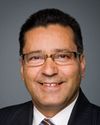Thank you, Mr. Chair.
And thanks to the witnesses for coming and giving us wonderful presentations, I would say, in really simple language.
Mr. Chair, I will tell you this. I have lived through the foreign credential recognition problems. When I came to Canada from India in 1989, I had been a lawyer for nine years and it took me six to seven years to get back into my profession.
Things have changed. I have to say that the leadership role taken by our Conservative government has changed the dynamics of the whole game. The CIC took this pre-arrival orientation, for example, and through HRSDC a couple of years ago, we took this leadership with a pan-Canadian framework process. All of this has helped. In my own profession today, things have drastically changed, I would say. It doesn't take that long now.
And of course I agree with you that this is a complex matter, with all kinds of regulatory bodies and departments having to work with each other. It is not a simple and straightforward process.
But one thing struck me, Mr. LaRue, in your presentation on page 5, where you said that “Common key messages delivered at these meetings identified...increased availability of supervised work placements....” That line I like.
I'm from Calgary, Alberta. I have heard some people say that the safest place to have a heart attack in Alberta might be the back seat of a taxi. The chances are that it is a doctor who is driving that car—which to an extent is true. But it is very serious, though. Keeping that in mind, and at the same time that the demand for that particular profession is high, I will pose my questions, and anyone can elaborate on them.
My number one question would be, what is Health Canada doing to help foreign-trained doctors get licensed and integrate into our health workforce? I have heard from quite a few doctors that there is a process of foreign qualification assessment. They are told to pass some exams. They do pass their exams. They invest their money. Ultimately, some of them are not successful in getting residency. So there is a practical pathway, and I believe, working with provinces and territories, that is also their goal. I can also see the will of provinces and the territories when they work on the framework that, ultimately, we'll be able to resolve that issue also.
So is the federal government doing anything to address that residency challenge?




